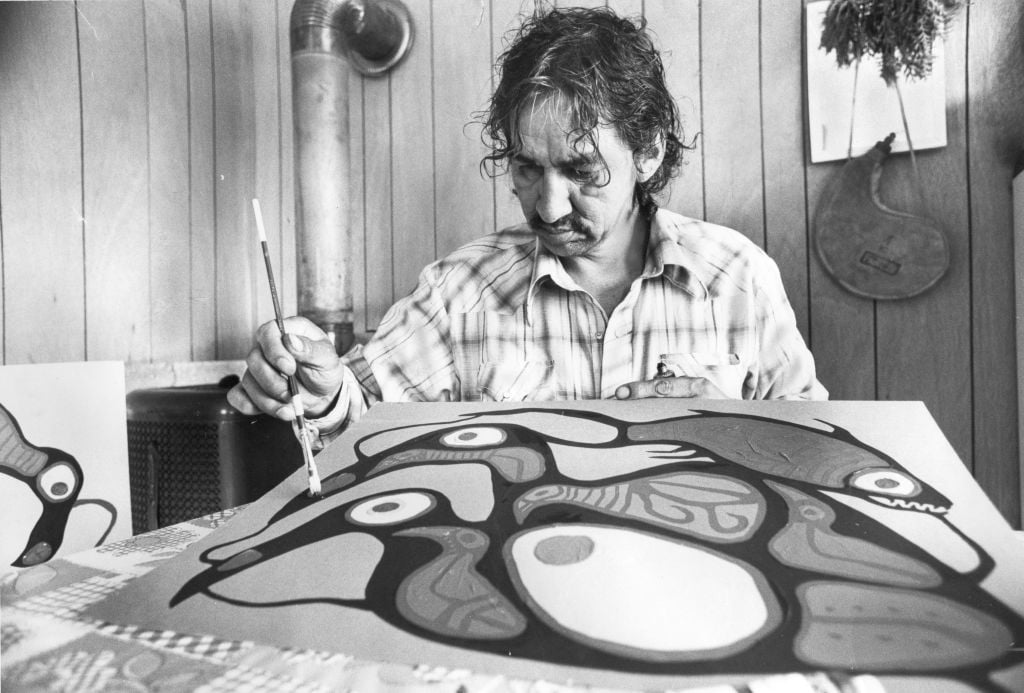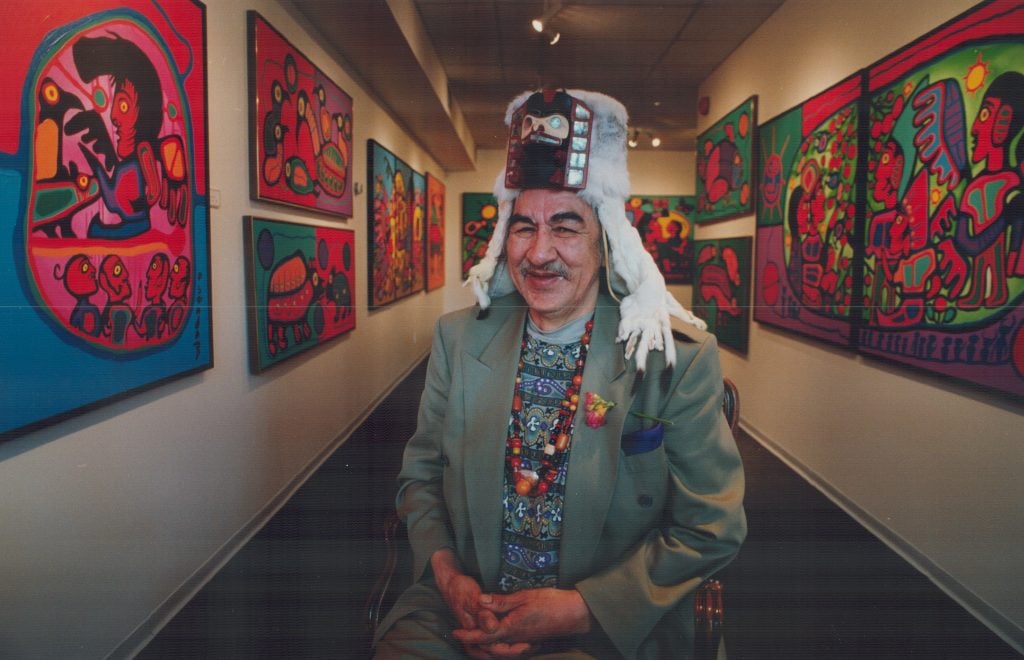Law & Politics
Kingpin in Canada’s Largest Art Forgery Ring Sentenced
More than 1,600 works attributed to the Anishinaabe artist were forgeries.

More than 1,600 works attributed to the Anishinaabe artist were forgeries.

Brian Boucher

One of the central figures in a years-long forgery ring creating paintings that were passed off as being by Anishinaabe Canadian artist Norval Morrisseau has been sentenced in a Thunder Bay, Ontario, court to five years in prison.
David John Voss pleaded guilty to forgery and intentionally using forged documents in operating a fraud ring from 1996 to 2019; more than 1,000 fake artworks have been seized of more than 1,600 that were created.
Born in 1931, Morrisseau was subjected to schooling in one of the government’s notorious residential schools, institutions that were meant to force native people to assimilate. But he went on to achieve fame in the 1960s with his brightly hued paintings. He was the founder of a visionary style and, along with other artists, formed what came to be referred to as the Woodlands School of Art. Also known as Copper Thunderbird, Morrisseau died in 2007 at age 75.
“The purpose of the creation of these fake paintings was to gain an economic benefit, but in the course of creating and selling these fakes, the legacy of Norval Morrisseau has been irrevocably damaged,” said Superior Court Justice Bonnie Warkentin in handing down Voss’s sentence on Thursday. “His spirituality has been undermined and tarnished, so today, we have one small opportunity to address this wrong.”
Investigators say this is Canada’s largest-ever art fraud investigation, but the judge said that it went beyond that. “This is more than just an art fraud,” she said. “It’s an appropriation of a cultural and spiritual identity of one of Canada’s most loved and valued artists.”
Voss created an assembly-line process in which he would draw on sheets of paper and mark what areas should be filled in with which colors, in a paint-by-numbers procedure.

Norval Morrisseau. Photo: Jeff Goode/Toronto Star via Getty Images
Eight people were charged last year in connection with the forgery ring. The artist’s nephew, Benjamin Morrisseau, created some of the forgeries, and agreed to participate in reparation measures after meeting with elders.
Gary Lamont, another central figure in the scheme, was sentenced to five years in prison.
Several people read out impact statements to the court. Art collector Kevin Hearn, a member of Canadian rock band Barenaked Ladies, was one of them, saying over Zoom that he had bought a faked work for $20,000 and was told by the dealer that he was lucky to get it for that price. “I was anything but lucky to buy it,” he said.
Cory Dingle, executive director of Morrisseau’s estate, estimates that the estate faces at least $100 million in losses. He has called for Voss to assist in locating the fake works he produced. He described the forgeries as having had an “unimaginable impact.”
“The emotional anguish endured by Norval, confined to a wheelchair with Parkinson’s disease, witnessing the theft of his legacy and the perversion of his cultural teaching is a tragedy beyond words,” he said, adding that he believes the crime to be not only Canada’s largest-ever forgery case but also the “largest cultural appropriation event in modern history.”
The forgeries have created a profound distortion of art history and the interpretation of the artist’s culture, he said.
“This crime perpetrated by a non-Indigenous individual has not only stolen the cultural and artistic identity of Indigenous communities,” he said, “but also has perverted the legends and stories of the peoples.”